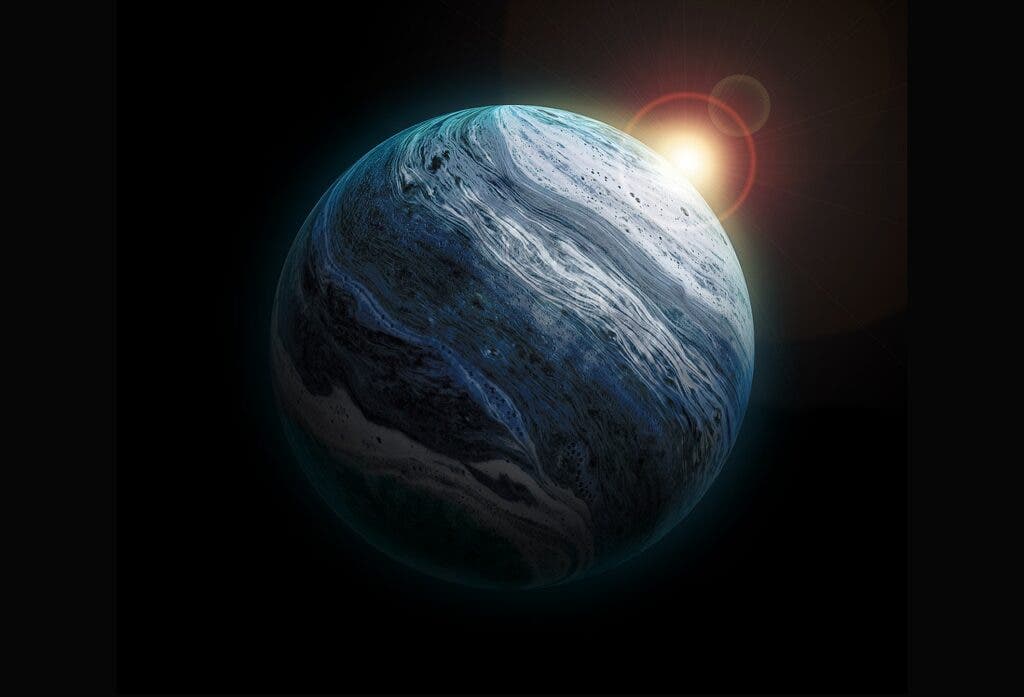Fans of possible life-hosting worlds now have a reason to rejoice. Astronomers from the University of Cambridge believe that a new class of exoplanets very different from our own has been identified which could support life.
Coined “Hycean” planets, they are hot and ocean-covered with hydrogen-rich atmospheres – which are more numerous and easy to observe than Earth-like exoplanets due to their size. Up until this time, scientists have focused their efforts on seeking planets and moons of a similar size, mass, temperature, and atmospheric composition to Earth. This recent discovery, however, could greatly accelerate the search for living organisms outside our own solar system. Researchers say that the results – published in The Astrophysical Journal – could mean that finding biosignatures of life outside our solar system within the next two or three years is a real possibility.
“Hycean planets open a whole new avenue in our search for life elsewhere,” said Dr. Nikku Madhusudhan from Cambridge’s Institute of Astronomy, who led the research.
Many of these bodies identified by Madhusudhan and his team are bigger and hotter than our own Blue Dot, but make up for it with characteristics that could allow them to host large oceans. These hot oceans could support microbial life similar to Earth’s most extreme aquatic environments. Hycean planets also give scientists a greater sample from which to draw from observations.
A different kind of exoplanet
Thousands of planets outside our own Solar System have been discovered since the first exoplanet was identified almost 30 years ago. The vast majority of these are planets between the sizes of Earth and Neptune, often referred to as “super-Earths” or “mini-Neptunes” because they are just over 1.5 times the size of our home planet, but still smaller than the solar system’s outermost planet (sorry Pluto). These can be predominantly rocky or ice giants with hydrogen-rich atmospheres, or something in between. Earlier studies of such planets have found that the pressure and temperature beneath those with hydrogen-rich atmospheres would be too high to support life.
Now, it seems that things could be changing. A recent study on the super-Earth K2-18b by Madhusudhan’s team found that in certain conditions these planets could support life. This led to a detailed investigation into the full range of planetary and stellar properties for which these conditions are possible, which known exoplanets may satisfy those conditions, and whether their biosignatures may be observable.
With massive planet-wide oceans beneath hydrogen-rich atmospheres, Hycean planets can be up to 2.6 times larger than Earth with atmospheric temperatures up to nearly 200 degrees Celsius (392 Fahrenheit), but their oceanic conditions could be similar to those conducive for microbial life in Earth’s oceans. Such planets also include tidally locked ‘dark’ Hycean worlds that may have habitable conditions only on their permanent night sides, and ‘cold’ Hycean worlds which receive little radiation from their stars.
“Essentially, when we’ve been looking for these various molecular signatures, we have been focusing on planets similar to Earth, which is a reasonable place to start,” said Madhusudhan. “But we think Hycean planets offer a better chance of finding several trace biosignatures (such as oxygen, ozone, methane and nitrous oxide)…A biosignature detection would transform our understanding of life in the universe. We need to be open about where we expect to find life and what form that life could take, as nature continues to surprise us in often unimaginable ways.”
Planets of the Hycean-size dominate the known exoplanet population, although they have not been studied in nearly as much detail as super-Earths. Hycean worlds are likely quite common, meaning that the most promising places to look for life elsewhere in the galaxy may have been hiding in plain sight all along.










